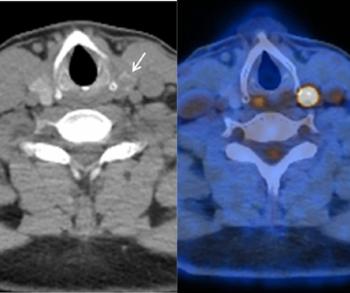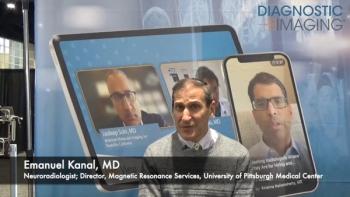
Can an Emerging PET Radiotracer Enhance Detection of Prostate Cancer Recurrence?
The use of 68Ga-RM2 PET/MRI demonstrated a 35 percent higher sensitivity rate than MRI alone for the diagnosis of biochemical recurrence of prostate cancer, according to research recently presented at the Radiological Society of North America (RSNA) conference.
New research suggests that targeting gastrin releasing peptide receptors (GRPRs) with 68Ga-RM2 PET/MRI may significantly enhance the diagnosis of prostate cancer recurrence.
For the prospective phase II/III study, recently presented at the
Findings from the research revealed that 68Ga-RM2 PET/MRI had an 85.2 percent sensitivity rate for diagnosing biochemical recurrence of
While both modalities offered comparable specificity at 100 percent, use of 68Ga-RM2 PET/MRI led to a significantly higher detection of prostate cancer lesions (143 vs. 96 for MRI alone), according to the research, which was awarded with the RSNA 2023 Trainee Research Prize in the Nuclear Medicine and Molecular Imaging category
Noting that GRPRs are overexpressed in prostate cancer, study author Heying Duan, M.D., M.B.A, said 68Ga-RM2 PET/MRI may prove to be a viable option for diagnosing and facilitating timely intervention for biochemical recurrence of prostate cancer.
“The collective findings of this comparative imaging trial and other published studies provide compelling evidence that 68Ga-RM2 PET/MRI not only outperforms conventional imaging with MRI but also shows higher reliability and number of lesions detected, which could potentially affect subsequent patient management,” wrote Dr. Duan, a postdoctoral research fellow at the Stanford University School of Medicine.
Reference
1. Duan H, Moradi F, Davidzon GA, et al. Final analysis of a prospective, single-center, phase II/III imaging trial of 68Ga-RM2 PET/MRI in patients with biochemical recurrence of prostate cancer. Presented at the RSNA 2023 109th Scientific Assembly and Annual Meeting Nov. 26-30, 2023. Available at
(Editor’s note: For related content, see “
Newsletter
Stay at the forefront of radiology with the Diagnostic Imaging newsletter, delivering the latest news, clinical insights, and imaging advancements for today’s radiologists.



























